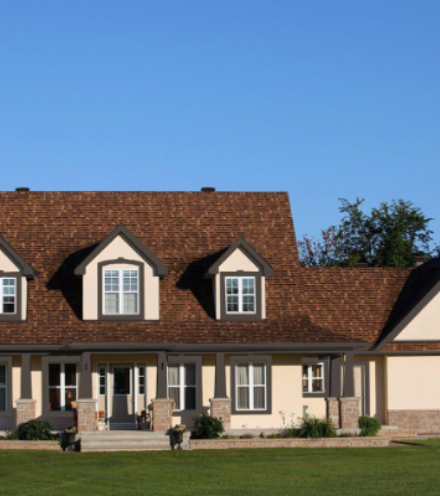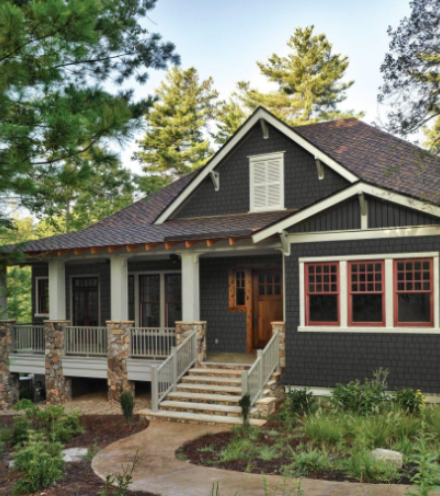You want your home to look its best, and that often means choosing a siding that will not only match your home’s architecture and style, but that will also continue to look great year after year.
Exterior siding is your home’s first line of defense against the elements, as well as part of what makes it look beautiful. The siding you choose is going to be subjected to whatever Mother Nature can throw at it, and in some climates, this can be a lot. If your siding ends up peeling, chipping, or rotting, you’re going to have to take steps to maintain it in order for your home to keep looking its best.
Low-Maintenance Siding Materials
There are several different options available on the market for siding, many of which are considered or advertised as low-maintenance. However, not every low- maintenance siding on the market is going to be right for what you need. Make sure that the siding you select for your home is truly as low-maintenance, durable, and attractive as you need it to be.
1. Vinyl
Vinyl siding is usually billed as a low-maintenance material that will free you from having to scrape, paint, and otherwise care for your home’s exterior. It’s been around since the 1950s, and was first introduced as an alternative to wood.
Pros of Vinyl Siding
In many ways, vinyl is less maintenance than wood siding, as it does not require regular painting. The color goes right through the planks, which are made of a type of plastic called polyvinyl chloride. This means that the color can’t peel, chip, or fade, all of which are problems that wood eventually has. Vinyl also doesn’t rot and is resistant to moisture issues.
Cons of Vinyl Siding
Unfortunately, vinyl isn’t quite as low-maintenance as it’s often described. Vinyl can melt in hot temperatures and crack in extreme cold. It may also develop cracks upon impact, and while vinyl itself resists moisture, it can hide serious moisture problems behind it if it’s installed with a foam backing. These moisture problems could lead to issues such as mold, mildew, and wood rot beneath the vinyl where it can’t be seen, which means a lot more maintenance and repair work than you may realize.
2. Modified Wood
Modified wood siding is another low-maintenance material that many people choose when they want the look and sustainability of real wood, but without the care and maintenance that goes into most wood siding.
Pros of Modified Wood
Modified wood siding is generally very durable and weatherproof, without many of the typical issues that wood siding is known for, such as wood rot. It doesn’t require painting the way that pressure treated wood does, which can be considered a plus, especially if you prefer a rustic look for your property. Modified wood eventually takes on a natural or weathered appearance as it ages, but it doesn’t tend to rot like wood. It also resists insect activity better than regular wood siding.
Cons of Modified Wood
The biggest drawback to most modified woods is the same as one of its pros - it can’t be painted. It’s good from a maintenance standpoint – no need to scrape and repaint, but it restricts the options you have for the appearance of your home. While some very rustic or modern buildings look good with a natural or weathered appearance, more traditional homes look their best when painted, which means that modified wood is often not the best choice.
3. Aluminum
Aluminum siding is one of the oldest alternatives to wood siding, and was first created back in the 1930s. It’s not as popular as some sidings, mostly because people don’t realize what it can look like, and worry it will make their homes seem industrial in style.
Pros of Aluminum Siding
Aluminum is fairly low-maintenance, and doesn’t have any of the drawbacks of vinyl - it won’t melt in the sun or crack in the cold. It’s available in both smooth planks and planks that have a wood-look texture, so you have some options for how you can clad your home. It’s also fairly long lasting, as it resists most moisture problems and insect activity, and it’s flame retardant.
Cons of Aluminum Siding
Aluminum has another set of concerns, however, when it comes to overall maintenance. The color of the siding tends to fade fairly quickly, turning into a chalky residue that can brush off on your clothing. To deal with this, you need to repaint the siding every few years, so it’s not nearly as low-maintenance as you would seem. It also tends to dent easily, so if it’s hit with a stray ball or a hailstone, you will see a visible mark left behind.
4. Stone Veneer
Stone veneer is another material that gets a lot of interest from people looking for a natural appearance for their home, but who want to avoid the painting and scraping that most wood products require.
Pros of Stone Veneer Siding
Stone veneer is very attractive. It can give your home a natural or rustic appearance, and the veneer itself is low-maintenance - it resists moisture issues and insect activity, and it’s flame retardant. You don’t have to scrape it or paint it, and it will look great year after year.
Cons of Stone Veneer Siding
Unfortunately, stone veneer can be prohibitively expensive in some cases, as well as difficult to install over the entirety of the home, leading many homeowners to mix stone veneer with other materials to help cover the exterior completely. This can make stone veneer a good accent material, but since it frequently gets mixed with other materials that can lead to issues, it’s not really a viable choice.
5. Fiber Cement (Winner)
One truly low-maintenance option for siding, that also allows for a great deal of flexibility in appearance and color is fiber cement siding. Fiber cement is made of a blend of cellulose fiber, with Portland cement, sand, and silica. This formula produces a heavy material that’s resistant to moisture, insect activity, and impacts. It also resists most harsh climate problems caused by extreme heat or cold, and it’s flame retardant.
Fiber cement comes in a range of different textures and styles, either primed and ready for painting or already finished in a wide range of colors for easier installation. The color resists chipping and fading longer than wood, so it’s much lower in maintenance. Fiber cement also comes in a range of matching trims, along with soffits and fascia, for lower maintenance over your entire home.
You also get many options for sizes, styles, and installations. Choose from traditional lap siding, board and batten siding, shiplap installation, architectural panels, or a range of cedar look and decorative shingles. With fiber cement siding, you can improve the curb appeal of your home, no matter what it’s architectural style, while having a low- maintenance exterior.
Choose the Best Option for Your Home
With so many options on the market being billed as low-maintenance, it can be difficult to determine which one may be right for your home. Fiber cement siding gives you the low-maintenance you need with the style and options you want. Make the right choice for your home and choose fiber cement siding to take care of and enhance your property.
Contact an expert at Allura today to get started with fiber cement siding.




